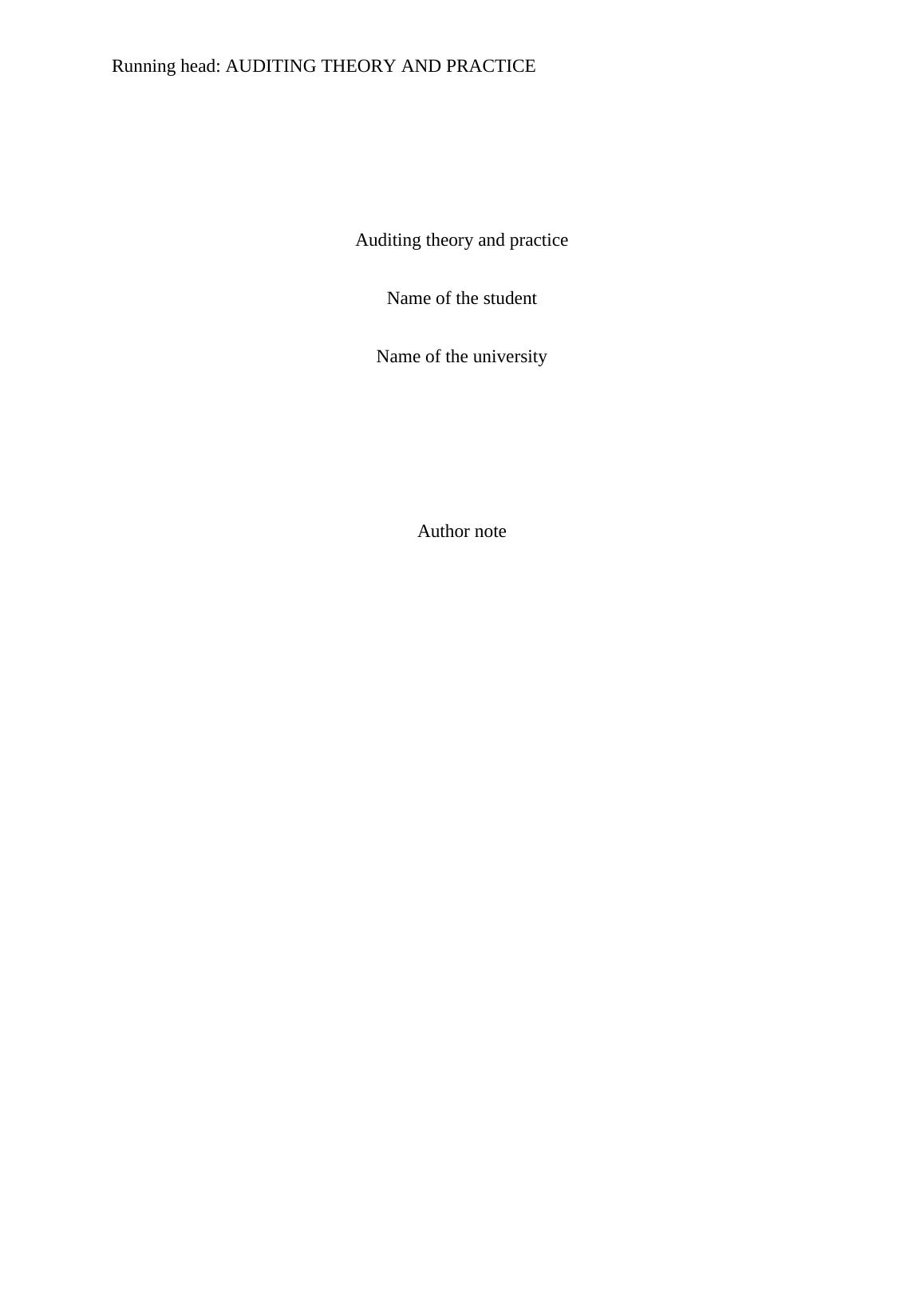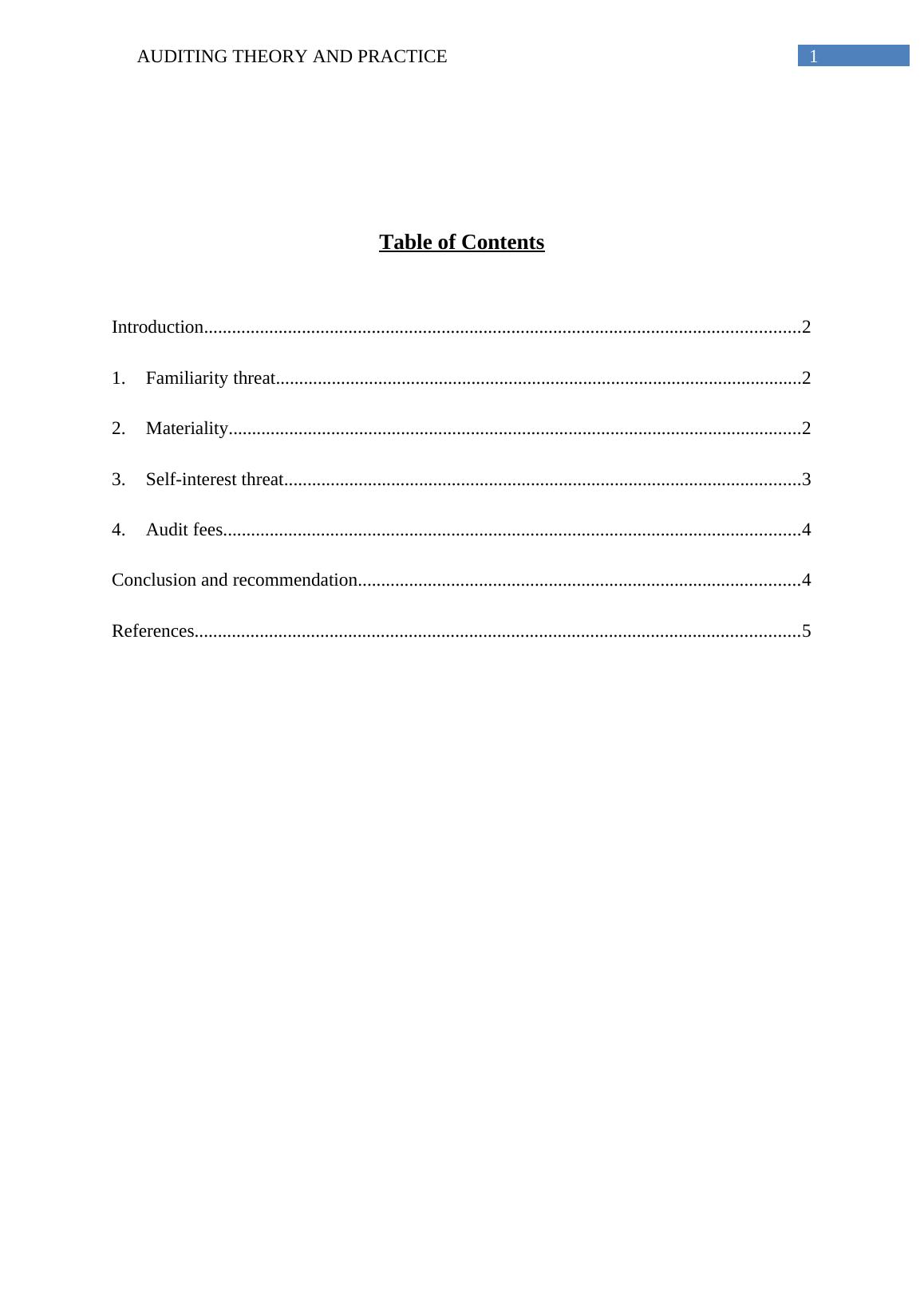Report on Auditing Theory & Practice
Added on 2020-05-03
7 Pages1441 Words98 Views
Running head: AUDITING THEORY AND PRACTICEAuditing theory and practiceName of the studentName of the universityAuthor note

1AUDITING THEORY AND PRACTICE Table of ContentsIntroduction................................................................................................................................21.Familiarity threat.................................................................................................................22.Materiality...........................................................................................................................23.Self-interest threat...............................................................................................................34.Audit fees............................................................................................................................4Conclusion and recommendation...............................................................................................4References..................................................................................................................................5

2AUDITING THEORY AND PRACTICE Introduction As per the IESBA’s Code of Ethics for the Professional Accountants the conceptualframework requires the professional accountant to evaluate, mention and identify the threatsto comply with the fundamental principles. The approaches of conceptual framework assistthe professional auditor to comply with ethical requirement of the IESBA Code and servingthe public interest (Clarke et al. 2017). 1.Familiarity threatThe familiarity threat arises where the auditor has a close or ling relationship with theclient company. as in the given case, Lola Payne, the previous auditor of Dockland allowed toact as the accountant of the company as the accountant of the company resigned and theclient is not able to up to date their accounting records (Hayes, Rick, Philip Wallage, andHans Gortemaker 2014). As Lola Payne acted as the auditor of the company it will beregarded as she had a close relationship with the company that will raise the familiarity threatand it may affect the objectivity of the professional. Further, the ex-auditor’s engagement asthe accountant of the client company will have an impact on the independence of the auditor.Further, as per IESBA, 2 years cooling off period shall be there to reduce the negativeimpact of engaging ex-auditor as an employee of the company. Therefore, in the given caseLola Payne shall not accept the offer of engagement as the accountant of the client companyas it will violate the professional ethics and will have an adverse impact on the independencyof the auditor (Houghton, Keith, and Tom Campbell 2013).2.Materiality The materiality concept is crucial for the auditor as well as the clients. However, noagreed-upon guidelines are there with respect to numeric or any specific criteria to determine

End of preview
Want to access all the pages? Upload your documents or become a member.
Related Documents
Auditing Theory and Practice Assignment Samplelg...
|12
|2127
|172
Ethical Principles and Audit Report Contentslg...
|4
|1056
|490
Auditing and Professional Practice | Assignmentlg...
|10
|1934
|85
Auditing and Professional Practicelg...
|9
|1771
|30
Case Study Auditing and Assurancelg...
|10
|2792
|673
Code of Ethics of Professional Accountantlg...
|13
|3080
|46